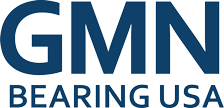There are many different types of bearings available today with very little information on the differences between them. Maybe you’ve asked yourself “which bearing will be best for your application?” Or “how do I choose a bearing?” This article will help you answer those questions.
First off, you need to know that most bearings with a rolling element fall into two broad groups:
- Ball bearings
- Roller bearings
Within these groups, there are sub-categories of bearings that have unique features or optimized designs to enhance performance.
In this article, we’ll cover the four things you need to know about your application in order to choose the right type of bearing.
Find the Bearing Load & Load Capacity

Bearing loads are generally defined as the reaction force a component places on a bearing when in use.
When choosing the right bearing for your application, first you should find the bearing’s load capacity. The load capacity is the amount of load a bearing can handle and is one of the most important factors when choosing a bearing.
Bearing loads can either be axial (thrust), radial or a combination.
An axial (or thrust) bearing load is when force is parallel to the axis of the shaft.
A radial bearing load is when force is perpendicular to the shaft. Then a combination bearing load is when parallel and perpendicular forces produce an angular force relative to the shaft.
How Ball Bearings Distribute Loads

Ball bearings are designed with spherical balls and can distribute loads over a medium-sized surface area. They tend to work better for small-to-medium-sized loads, spreading loads via a single point of contact.
Below is a quick reference for the type of bearing load and the best ball bearing for the job:
- Radial (perpendicular to the shaft) and light loads: Choose radial ball bearings (also known as deep groove ball bearings). Radial bearings are some of the most common types of bearings on the market.
- Axial (thrust) (parallel to the shaft) loads: Choose thrust ball bearings
- Combined, both radial and axial, loads: Choose an angular contact bearing. The balls contact the raceway at an angle which better supports combination loads.
Roller Bearings & Bearing Load
Roller bearings are designed with cylindrical rollers that can distribute loads over a larger surface area than ball bearings. They tend to work better for heavy load applications.
Below is a quick reference for the type of bearing load and the best roller bearing for the job:
- Radial (perpendicular to the shaft) loads: Choose standard cylindrical roller bearings
- Axial (thrust) (parallel to the shaft) loads: Choose cylindrical thrust bearings
- Combined, both radial and axial, loads: Choose a taper roller bearing
Rotational Speeds
The rotational speed of your application is the next factor to look at when choosing a bearing.
If your application will operate at high rotational speeds, then ball bearings are usually the preferred choice. They perform better at higher speeds and offer a higher speed range than roller bearings.
One reason is that the contact between the rolling element and the raceways in a ball bearing is a point instead of a line of contact, like in roller bearings. Because rolling elements press into the raceway as they roll over the surface, there is much less surface deformation occurring in the point loads from ball bearings.
Centrifugal Force and Bearings
Another reason a ball bearing is better for high-speed applications is because of centrifugal forces. Centrifugal force is defined as a force that pushes outward on a body moving around a center and arises from the body’s inertia.
Centrifugal force is the main limiting factor to bearing speed because it turns into radial and axial loads on a bearing. Since roller bearings have more mass than a ball bearing, the roller bearing will produce a higher centrifugal force than a ball bearing of the same size.
Reduce Centrifugal Force with Ceramic Balls Material
Sometimes an application’s speed is above a ball bearing’s speed rating.
If this happens, a simple and common solution is to switch the ball bearing material from steel to ceramic. This keeps the bearing size the same but offers roughly a 25% higher speed rating. Since ceramic material is lighter than steel, ceramic balls produce less centrifugal force for any given speed.
Angular contact bearings are the best bearing choice for high-speed applications. One reason is that the balls are smaller and smaller balls weigh less and produce less centrifugal force when rotating. Angular contact bearings also have a built-in preload on the bearings which works with centrifugal forces to properly roll the balls in the bearing.
If you are designing a high-speed application, then you’ll want a high-precision bearing, usually within the ABEC 7 precision class.
A lower precision bearing has more dimensional “wiggle room” when it’s manufactured than a high precision bearing. Therefore, when the bearing is being used at high speeds, the balls rapidly roll over the bearing raceway with less reliability which can lead to a bearing failure.
High precision bearings are manufactured with strict standards and have very little deviation from the specs when produced. High precision bearings are reliable for applications that go fast because they ensure good ball and raceway interaction.
Bearing Runout & Rigidity
Bearing runout is the amount a shaft orbits from its geometric center as it rotates. Some applications, like cutting tool spindles, will only allow a small deviation to occur on its rotating components.
If you are engineering an application like this, then choose a high precision bearing because it will produce smaller system runouts due to the tight tolerances the bearing was manufactured to.
Bearing rigidity is the resistance to the force that causes the shaft to deviate from its axis and plays a key role in minimizing shaft runout. Bearing rigidity comes from the interaction of the rolling element with the raceway. The more the rolling element is pressed into the raceway, causing elastic deformation, the higher the rigidity.
Bearing rigidity is usually categorized by:
- Axial rigidity
- Radial rigidity
The higher the bearing rigidity, the more force needed to move the shaft when in use.
Let’s look at how this works with precision angular contact bearings. These bearings typically come with a manufactured offset between the inner and outer raceway. When the angular contact bearings are installed, the offset is removed which causes the balls to press into the raceway without any outside application force. This is called preloading and the process increases bearing rigidity even before the bearing sees any application forces.
Bearing Lubrication
Knowing your bearing lubrication needs is important for choosing the right bearings and needs to be considered early in an application design. Improper lubrication is one of the most common causes for bearing failure.
Lubrication creates a film of oil between the rolling element and the bearing raceway that helps prevent friction and overheating.
The most common type of lubrication is grease, which consists of an oil with a thickening agent. The thickening agent keeps the oil in place, so it won’t leave the bearing. As the ball (ball bearing) or roller (roller bearing) rolls over the grease, the thickening agent separates leaving just the film of oil between the rolling element and the bearing raceway. After the rolling element passes by, the oil and thickening agent join back together.
For high-speed applications, knowing the speed at which the oil and thickener can separate and rejoin is important. This is called the application or bearing n*dm value.
Before you select a grease, you need to find your applications ndm value. To do this multiply your applications RPMs by the diameter of the center of the balls in the bearing (dm). Compare your ndm value to the grease’s max speed value, located on the datasheet.
If your n*dm value is higher than the grease max speed value on the datasheet, then the grease won’t be able to provide sufficient lubrication and premature failure will occur.
Another lubrication option for high-speed applications are oil mist systems which mix oil with compressed air and then inject it into the bearing raceway at metered intervals. This option is more costly than grease lubrication because it requires an external mixing and metering system and filtered compressed air. However, oil mist systems allow bearings to operate at higher speeds while generating a lower amount of heat than greased bearings.
For lower speed applications an oil bath is common. An oil bath is when a portion of the bearing is submerged in oil. For bearings that will operate in extreme environments, a dry lubricant can be used instead of a petroleum-based lubricant, but the lifespan of the bearing is typically shortened due to the nature of the lubricant’s film breaking down over time. There are a couple of other factors that need to be considered when selecting a lubricant for your application, see our in-depth article “Everything You Need to Know About Bearing Lubrication.
Summary: How to Choose a Bearing
How to choose the right bearing for your application:
- Find the Bearing Load & Load Capacity
First, know the type and amount of bearing load that your application will place on the bearing. Small-to-medium-sized loads usually work best with ball bearings. Heavy load applications usually work best with roller bearings.
- Know the Rotational Speed of Your Application
Determine the rotational speed of your application. High speeds (RPM) usually work best with ball bearings and lower speeds usually work best with roller bearings.
- Factor in Bearing Runout & Rigidity
You also want to determine what kind of runout your application will allow. If the application allows only small deviations to occur, then a ball bearing is most likely your best choice.
- Find the Right Lubrication for Your Bearings Needs
For high-speed applications, calculate your n*dm value, and if it’s higher than the grease max speed, then the grease won’t be able to provide sufficient lubrication. There are other options like oil misting. For low-speed applications, an oil bath is a good choice.
 Angular Contact Ball Bearings
Angular Contact Ball Bearings
 Radial Ball Bearings
Radial Ball Bearings
 Other Bearing Brands
Other Bearing Brands
 Complete Sprag Clutch Units
Complete Sprag Clutch Units
 Ball Bearing Sprag Clutch Units
Ball Bearing Sprag Clutch Units
 Sprag Clutch Elements (400 Series)
Sprag Clutch Elements (400 Series)
 No RPM Limit FE 8000 Series
No RPM Limit FE 8000 Series
 Backstopping Clutch with Mounting Tab
Backstopping Clutch with Mounting Tab
 Roller Ramp Clutches
Roller Ramp Clutches
 CF Seals
CF Seals
 L Seals
L Seals
 M Seals
M Seals
 S Seals (Gap Seals)
S Seals (Gap Seals)






